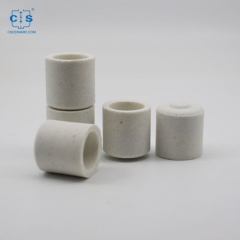
Ceramic Crucible Leco 528-018. Manufacturer of carbon sulfur crucible & cs crucible for LECO CS230. Eltra 90148/90149/90150/90152 Horiba 905.200.380.001 Bruker: JW-N009250423 Alpha AR3818 SerCon: SC0893 LECO528-018/002-301/002-302 Elementar 905.200.380.001 AN. Used for Carbon sulfur Analyzer Elemental Analysis.
Read More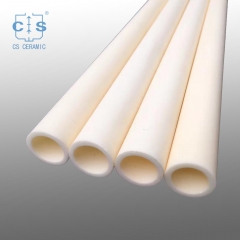
Alumina tubes both sides open are commonly used in various industrial and laboratory applications. They are ideal for use in processes such as heating, cooling, and drying, and can offer superior thermal and electrical insulation.
Read More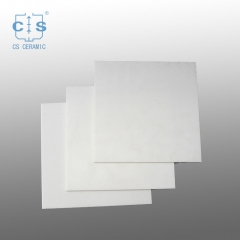
Alumina Ceramic Substrate Sheet is an ideal choice for applications requiring high performance, reliability, and durability. It is available in various sizes and thicknesses to suit different applications.
Read More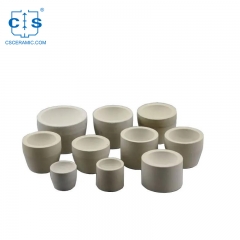
Achieve unparalleled levels of purity with our Bone Ash Cupels. Engineered to remove impurities and unwanted elements, these cupels enable you to extract the true essence of your precious metals.
Read More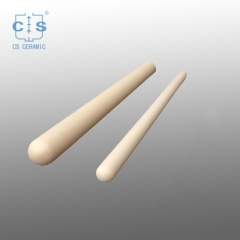
Alumina pipes advantage:high heat resistance,good cold-resistance heat-resistance,resistance to acid and alkali corrosion. Long service life. OEM is accpected.
Read More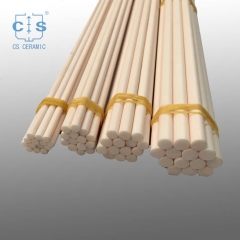
Circle alumina ceramic rods have a higher strength to weight ratio than other ceramics, and can be used to manufacture lighter and stronger parts.Available in a variety of sizes and shapes.
Read More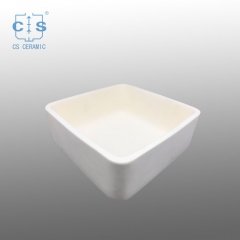
Alumina crucible and boat are wildly used in laboratory and industrial analysis as well as metal and nonmetal material sample melting.Available in various sizes and shapes.
Read More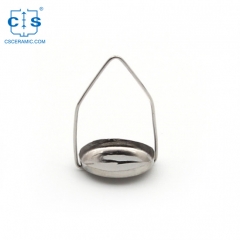
952018.906 100μl Platinum/Pt Crucibles(Sample Pans) for TA Instruments TA Q500/Q50/TGA 2950/2050. Manufacturer for TA crucibles and DSC sample pans. TA Instruments tga analyser good alternative sample cups.
Read More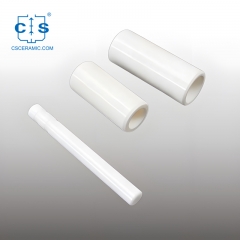
Zirconia ceramic are used in shaft, plunger, sealing structure, auto-mobile industry, oil drilling equipment, insulation parts in electrical equipment, ceramic knife, ceramic hair clipper spare parts, with high density, bending strength and breaking tenacity. We can supply the products according to customer's drawings, samples and performance requi1
Read More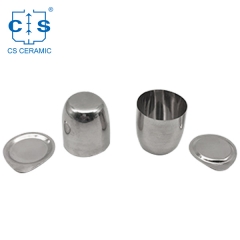
1. Do different size of Platinum/PT Crucibles as you need.2. Send us design drawing or specification of Platinum/PT Crucibles . Manufacturer of Platinum/PT Crucibles .CS CERMAIC CO.,LTD
Read Moreitem no. :
CS-BB-01Color :
WhitePort :
Any ports of Chinalead date :
1-7 daysMaterial : Zirconia ceramic
Shape : Round
1.Zirconia all-ceramic bearings have features of magnetoelectric insulation resistance, wear resistance and corrosion resistance, oil-free self-lubrication,
high temperature resistance and high cold resistance,
2.It can be used in harsh environments and special working conditions.
3.Rings and rolling elements are made of Zirconia (ZrO2) ceramic materials,
4.For material of retainer, polytetrafluoroethylene (PTFE) is standard configuration, generally glass fiber reinforced nylon dragon 66(GRPA66-25), special engineering plastics (PEEK, PI), stainless steel (AISI SUS316, SUS304), brass (Cu), etc. can be also used.
1. Corrosion resistance: The material itself has corrosion resistance, and can be applied to strong acid other than hydrofluoric acid, strong alkali, inorganic and organic salt, seawater and other fields. It is suitable for working under harsh conditions where is full of corrosive media, such as plating equipment, electronic equipment, chemical machinery, ship manufacturing, medical apparatus and instruments, etc.
2. High temperature resistance: between 180℃ and 260℃, ceramic bearings with retainers will not have expansion due to temperature difference. Working temperature of zirconia ceramic bearing filled with balls is between 300℃ and 800℃, and can be applied to high temperature equipment like furnace kilns, plastic and steel manufacturing devices.
3. Self-lubrication: Ceramic bearings have good self-lubricating property for their small friction coefficient and good surface smoothness, especially silicon nitride material, whose self-lubricating performance is excellent. Therefore, ceramic bearing do not need any grease. Under vacuum environment, problem of lubrication for ordinary bearings can be overcome with application of ceramic bearing.
4. Anti-magnetism: Because there is no magnetism and without dust absorption, so problem of early peeling off and loud noise can be reduced, for which it can be used in fields of demagnetization equipment and instruments.
5. Electrical insulation: due to its high resistance, arc damage to bearings can be avoided, so it can be used for power equipment with insulation requirement.
6. Density of ceramic rolling balls is lower than that of steel and their weight is much lighter, therefore, the centrifugal effect on the outer ring during rotation can be reduced by 40%, thus greatly prolonging the service life.
7. Ceramic is less affected by heat expansion and cold contraction than steel, so with constant clearance, bearing can be allowed to work in environment with severe temperature difference.
8. The elastic modulus of ceramics is higher than that of steel, and it is not easy to deform under stress. Therefore, it is conducive to improving the working speed and achieving higher precision.
Instructions for installation and use of ceramic bearings.
Angular contact ball bearings--Size details (Click this button)

Double row angular contact ball bearings--Size details (Click this button)
Self-aligning ball bearings--Size details (Click this button)
Single direction ball bearings--Size details (Click this button)

Insert bearing--Size details (Click this button)
| Performance parameters of bearing ceramic materials: | ||||||
| Item | Unit | Silicon nitride Si3N4 | Zirconia ZrO2 | Alumina 99.5% A12O3 | Silicon carbide | Bearing steel |
| Density | g/cm³ | 3.23 | 6.05 | 3.92 | 3.12 | 7.85 |
| water absorption | % | 0 | 0 | 0 | 0 | 0 |
| Thermal expansion coefficient | 10-6/K | 3.2 | 10.5 | 8.5 | 3 | 12.5 |
| Young's modulus of elasticity | Gpa | 300 | 210 | 340 | 440 | 208 |
| Poisson's ratio | ∕ | 0.26 | 0.3 | 0.22 | 0.17 | 0.3 |
| Hardness (Hv) | Mpa | 1500 | 1200 | 1650 | 2800 | 700 |
| Bending strength (room temperature) | Mpa | 720 | 950 | 310 | 390 | 520 (tensile strength) |
| Bending strength (700℃) | Mpa | 450 | 210 | 230 | 380 | ∕ |
| Compressive strength (room temperature) | Mpa | 2300 | 2000 | 2200 | 1800 | ∕ |
| Fracture toughness | Mpa*m | 6.2 | 10 | 4.2 | 3.9 | 25 |
| Thermal conductivity (room temperature) | W/m*k | 25 | 2 | 26 | 120 | 40 |
| Specific resistivity (room temperature) | Ω*mm2/m | >1013 | >1015 | >1016 | >103 | 0.1-1 |
| Maximum working temperature (without load) | ℃ | 1050 | 750 | 1750 | 1550 | 300 |
| Acid and alkali corrosion resistance | ∕ | Strong | Strong | Strong | Strong | Weak |
| Inner and outer rings/Ball/cage | Load capacity | Limiting speed | Anti-corrosion | Long-time working temp | Used costs |
| ZrO2/ZrO2/PA | ★★★★★ | ★★★★★ | ★★ | 90℃ | ★★★★★★ |
| ZrO2/ZrO2/PTFE | ★★★★★ | ★★★★★ | ★★★★★★★ | 180℃ | ★★★★★★ |
| ZrO2/ZrO2/PEEK | ★★★★★ | ★★★★★ | ★★★★★ | 260℃ | ★★★★★★ |
| ZrO2/ZrO2/PI | ★★★★★ | ★★★★★ | ★★★★★ | 300℃ | ★★★★★★ |
| ZrO2/ZrO2/(no cage) | ★★★★★★ | ★★★★★★ | ★★★★★★★ | 400℃ | ★★★★★★ |
| Si3N4/Si3N4/PTFE | ★★★★★★ | ★★★★★★ | ★★★★★★★ | 180℃ | ★★★★★★★ |
| Si3N4/Si3N4/PEEK | ★★★★★★ | ★★★★★★ | ★★★★★ | 260℃ | ★★★★★★★ |
| Si3N4/Si3N4/PA | ★★★★★★ | ★★★★★★ | ★★ | 90℃ | ★★★★★★★ |
| Si3N4/Si3N4/(no cage) | ★★★★★★ | ★★★★★ | ★★★★★★★ | 1100℃ | ★★★★★★★ |
| Si3N4/Si3N4/PI | ★★★★★★ | ★★★★★★ | ★★★★★ | 300℃ | ★★★★★★★ |
| POM/PA/(glass) | ★★★ | ★★★ | ★★ | 90℃ | ★ |
| POM/PA/316 | ★★★ | ★★★ | ★★ | 90℃ | ★ |
| HDPE/HDPE/(glass) | ★★ | ★★ | ★★★★ | 80℃ | ★ |
| HDPE/HDPE/316 | ★★ | ★★ | ★★★ | 80℃ | ★ |
| PP/(glass)/PP | ★★ | ★★ | ★★★★ | 85℃ | ★ |
| PEEK/ZrO2/PEEK | ★★★ | ★★★★★ | ★★★★★ | 260℃ | ★★★★★ |
| PEEK/ZrO2/PTFE | ★★★ | ★★★★★ | ★★★★★ | 180℃ | ★★★★★ |
| UPE/ZrO2/UPE | ★★ | ★★ | ★★★★ | 80℃ | ★★★★ |
| PTFE/ZrO2/PTFE | ★ | ★ | ★★★★★★★ | 180℃ | ★★★★ |
| PVDF/ZrO2/PVDF | ★★★ | ★★★ | ★★★★★★ | 150℃ | ★★★★ |
| 440C/440C/304 | ★★★★★★★ | ★★★★★★★ | ★ | 180℃ | ★ |
| 316/316/316 | ★★★★ | ★★★★ | ★★★ | 180℃ | ★★ |
| 304/304/304 | ★★★★ | ★★★★ | ★★ | 180℃ | ★★ |
| 316L/316L/316L | ★★★★ | ★★★★ | ★★★ | 180℃ | ★★ |
| 440C/ZrO2/304 | ★★★★★★ | ★★★★★★ | ★ | 180℃ | ★★★ |
| 440C/Si3N4/304 | ★★★★★★★ | ★★★★★★★ | ★ | 180℃ | ★★★ |
| 316/ZrO2/PTFE | ★★★★ | ★★★★ | ★★★ | 180℃ | ★★★★ |
| 316/Si3N4/316 | ★★★★ | ★★★★ | ★★★ | 180℃ | ★★★★★ |
| GCr15/GCr15/08F | ★★★★★★★ | ★★★★★★★ | ★ | 120℃ | ★ |
| GCr15/ZrO2/08F | ★★★★★★ | ★★★★★★ | ★ | 120℃ | ★ |
| GCr15/Si3N4/08F | ★★★★★★★ | ★★★★★★★ | ★ | 120℃ | ★★ |
When install bearings, equal pressure must be exerted on the circumference of the ferrule end face.
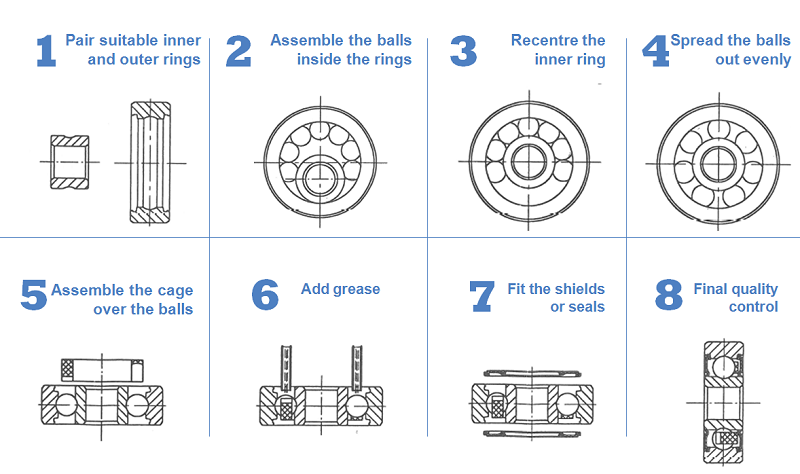
Carefully packed by wooden boxes with padded foams. 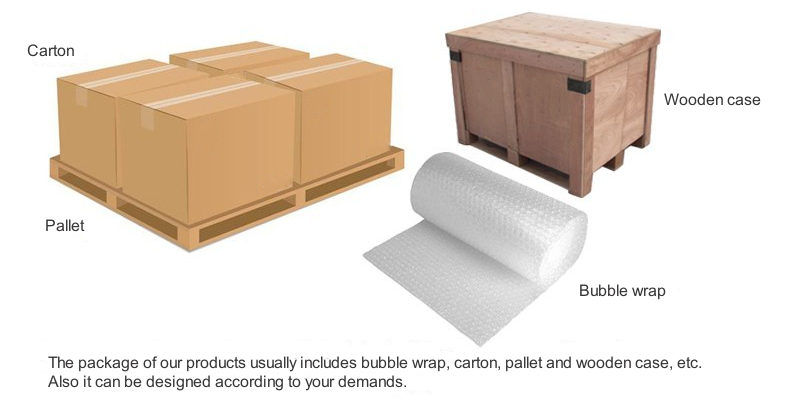
1.Density: The density of zirconium oxide ceramic bearings should be between 5.9 and 6.1 g/cm3.
2. Hardness: The Vickers hardness of zirconia ceramic bearings should be greater than 11.0 GPa.
3. Strength: The flexural strength of zirconia ceramic bearings should be greater than 1000MPa.
4. Wear resistance: The wear thin value of zirconium oxide ceramic bearings should be to a lesser extent than 0.01mm3/Nm.
5. Thermal shock resistance: The thermal shock underground of zirconium dioxide ceramic bearings should be greater than 200°C.
6. Corrosion resistance: The corrosion resistance of zirconia undefined bearings should be greater than 4.0 on a Mohs scale.
7. Electrical insulation: The electrical insulation of zirconia undefined bearings should be greater than 20MΩ/cm.
1.Our companies offer OEM services for zirconia bearings.
2..We will produce the bearings according to your specifications and provide them to you in bulk for your own use.
3.The bearings can also be customized with different coatings or lubricants to improve performance and extend the service life of the bearing.
4.In addition, Our service offer a variety of accessories to accompany the bearing, such as seals, shields, and bushings.
As a professional industrial ceramic supplier, we have a series of advantages that guarantee our market share in the international trade market.
1.Reliable quality control, complete specifications, support customization of non-standard products;
2.Professional and committed service team;
3.Multiple protection of packaging, secure and reliable;
4.Highly efficient delivery channel, safe and rest-assured.
1. Q: What are Zirconia Ceramic Ball Bearings?
A: Zirconia Ceramic Ball Bearings are a type of bearing which uses ceramic balls instead of traditional steel or other metal balls. They provide superior performance and are often used in applications where high temperatures, corrosive environments, extreme speeds, and low noise levels are desired. The ceramic material used allows for much higher heat tolerances and resistances to abrasion than traditional bearing materials.
2.Q: What are the advantages of using zirconia ceramic ball bearings?
A: Zirconia ceramic ball bearings offer many advantages including higher load capacity, higher speed, greater wear resistance, lower friction, and higher temperature stability. They are also lighter, more durable, and more resistant to corrosion than their steel and stainless steel counterparts. Additionally, they can be used in applications where extreme temperatures are present due to their higher temperature limits.
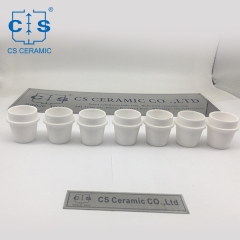 OEM TGA Alumina ceramic crucibles for TGA-Thermogravimetric analyzer analysis
OEM TGA Alumina ceramic crucibles for TGA-Thermogravimetric analyzer analysis
OEM item TGA Alumina ceramic crucibles for TGA-Thermogravimetric analyzer analysis .Suitable for Elemental laboratory analysers of Analytical Sciences chemical equipment, thermomechanical analysis.
 1.1ml Zirconia Crucibles Ceramic Sample Pans With Lids/Covers D16.2*H7.3mm
1.1ml Zirconia Crucibles Ceramic Sample Pans With Lids/Covers D16.2*H7.3mm
Zirconia crucibles Thermal analysis sample pans for TGA/DSC measurements. Thermal analysis crucible consumable sample tray for thermal test .
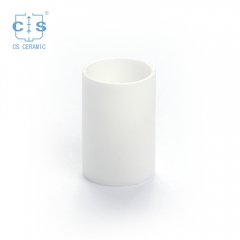 450μl Netzsch Sample Pans D8*12MM for Netzsch (DSC Crucibles)
450μl Netzsch Sample Pans D8*12MM for Netzsch (DSC Crucibles)
400μl Alumina crucibles for Netzsch DSC and TGA measurements. Manufacturer for Netzsch crucibles and sample cups. Netzsch Instruments good alternative DSC sample pans.
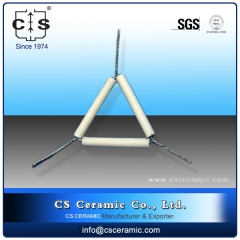 Whole Length 75mm Iron Wire Porcelain Pipeclay Triangle
Whole Length 75mm Iron Wire Porcelain Pipeclay Triangle
1. Features: high temperature resistance and chemical stability 2. Color: white 3. Length: 75mm
 Platinum Crucible Tongs Stainless steel tong Platinum coated
Platinum Crucible Tongs Stainless steel tong Platinum coated
Platinum Crucible Tongs stainless steel crucible tongs with platinum tip for platinum vessel
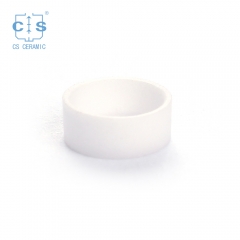 25μl Shimadzu Alumina Cells D6*1.5mm for Shimadzu (DSC Sample Pans)
25μl Shimadzu Alumina Cells D6*1.5mm for Shimadzu (DSC Sample Pans)
25μl Alumina crucibles cells for Shimadzu. Manufacturer for Shimadzu crucibles and sample cups. Shimadzu Instruments good alternative DSC sample pans.Complete Shimadzu Consumables list.
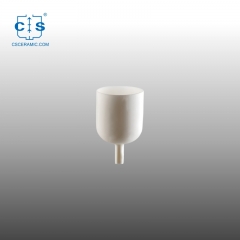 4.2ml Alumina Crucibles For TGA Sample Carrier Of The Netzsch STA 449 F1/F3/F5 Jupiter® STA 449 F3 Nevio
4.2ml Alumina Crucibles For TGA Sample Carrier Of The Netzsch STA 449 F1/F3/F5 Jupiter® STA 449 F3 Nevio
Netzsch special shape crucibles for TGA sample carrier of the STA 449 F1/F3/F5 Jupiter®,STA 449 F3 Nevio.
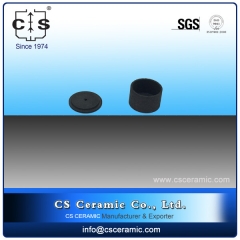 100μl OEM Graphite Crucible w/Lids for TA instruments
100μl OEM Graphite Crucible w/Lids for TA instruments
TA Graphite Crucibles Sample Pans and lids for TA Instruments. Manufacturer for TA crucibles and DSC sample pans.TA Instruments good alternative sample cups.
the professional team to service !
 +86 0731-23455639
+86 0731-23455639 info@csceramic.com
info@csceramic.com +86 18273288522
+86 18273288522